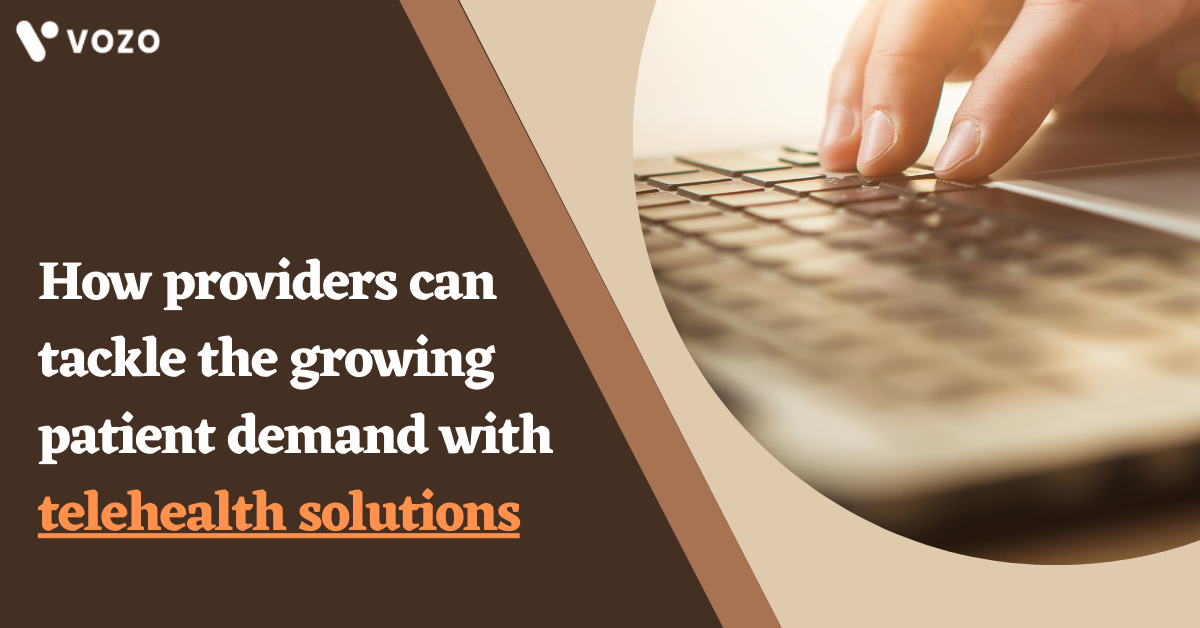How Providers Can Tackle The Growing Patient Demand With Telehealth Solutions
The demand for healthcare services is growing day by day. As the general population continues to age, the health facilities are in the state to find the best digital ways to improve their practice operations with growing patient demand.
The best option to tackle the growing demand is to adopt the right telehealth solutions. With real-time patient monitoring and remote consultation, providers can more easily connect and interact with their patients from anywhere. This article explains how to use telehealth more efficiently to achieve better outcomes.
The current scenario: Growing demand for healthcare
Healthcare is the quickest growing sector in the U.S. Seniors will in general require to double the number of medical care administrations as more youthful patients. They likewise will in general experience the ill effects of higher paces of persistent conditions, like diabetes, hypertension, joint inflammation, and asthma.
Older patients and those experiencing ongoing conditions might experience difficulty visiting healthcare providers face to face. Now and again, suppliers might have to go to these patients or arrange transportation for them to go to the office. Here telehealth will serve to be one of the best options
How telehealth solutions can reduce providers burden
Health systems of all sizes may need to take on additional staff members to keep pace with demand, but telehealth can help providers use their time more wisely either at home or at the office. Telehealth has been shown to decrease patient mortality rates and the average length of stay, so providers do not have to spend as much time caring for patients in person.
Providers can also save time throughout the day by corresponding remotely with their patients. They don’t have to worry about their patients missing or showing up late to appointments due to a lack of transportation. Elderly and chronically ill patients can easily correspond with providers using live video and audio from the comfort of their own homes.
Infectious diseases can also limit a provider’s ability to see and care for their patients. From the flu to the coronavirus, providers can use telehealth to treat and correspond with their patients without seeing them in person, thus limiting the spread of disease. If a physician or specialist gets sick, they don’t have to close the entire facility. They will still be able to check up on their patients as they recover safely at home. Providers can also expand their hours of operation by seeing patients remotely or reducing the number of onsite staff members.
Telehealth can also help providers expand their use of preventive care. Providers can use remote patient monitoring, text messages, and automatic reminders to keep their patients in the know. If an individual is recovering from surgery, the provider can use smart digital devices to make sure they are getting enough exercise or maintaining a healthy diet.
Providers can also use these tools to quickly share the latest health and disease prevention guidelines with their patients. This reduces the number of trips to the emergency room, so providers can use their time on a schedule that works for them.
RELATED: The Future Of Growth: Telehealth Visits In 2021 And Beyond
Making use of telehealth in the right way
When corresponding with patients using live video and audio, providers need to have access to the latest information to treat the patient promptly. The latest telehealth devices integrate the patient’s medical records, so the provider can analyze their history while making treatment recommendations and documenting the virtual encounter in real-time. This reduces the number of follow-ups and unforeseen incidents that can increase the cost of care.
Providers can also use telehealth to quickly share their knowledge and expertise. Many remote areas lack access to specialist providers. General practitioners and urgent care clinics can use live video and audio to remotely correspond with specialists in real-time.
This will either reduce the need for emergency transportation services or help onsite providers stabilize the patient until a transport team arrives, thus increasing the patient’s chances of survival.
Final Thoughts
As the population is growing towards the digital age, most people are interacting and accessing care via telehealth solutions. This telehealth adoption and the additional staff members to handle practice workflows help you easily tackle the growing patient demand.
Healthcare providers can save most of their valuable time while improving patient outcomes by successfully integrating telehealth into their medical practice. Schedule a free demo to know how Vozo telehealth solutions serve your practice at the best.
About the author

With more than 4 years of experience in the dynamic healthcare technology landscape, Sid specializes in crafting compelling content on topics including EHR/EMR, patient portals, healthcare automation, remote patient monitoring, and health information exchange.
His expertise lies in translating cutting-edge innovations and intricate topics into engaging narratives that resonate with diverse audiences.














